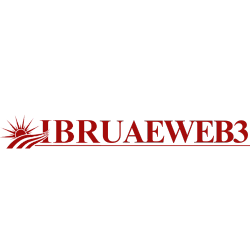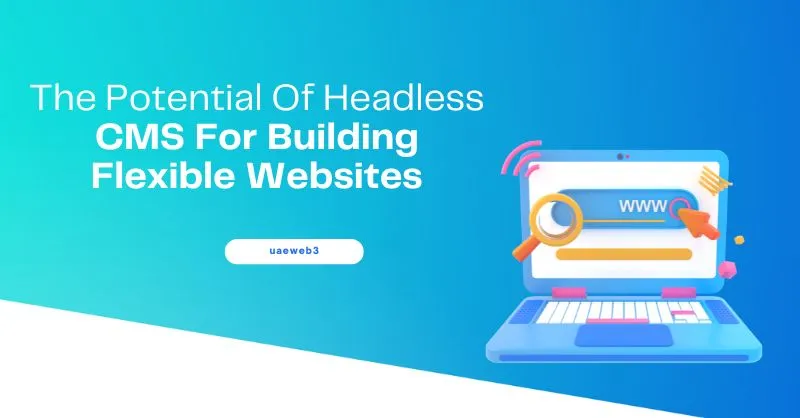The Potential Of Headless CMS For Building Flexible Websites

Selecting the best content management system (CMS) in the tidal storm of web development is like trying to navigate a deep blue sea full of waves without being able to see the land. Being one of the top web development and design firms in Dubai and, more recently, Riyadh, we hope to help you navigate the digital wave in this blog by educating you about headless CMS and its potential for creating dynamic websites. Now let’s get started!
Comprehending CMS: The Introduction
Let’s review the fundamentals first, namely CMS for vanity’s sake, before delving into the definition of headless CMS. Traditional content management systems (CMS) include WordPress, Drupal, Joomla, Magento, Shopify, HobSpot, Wix, and many more. These platforms are among the largest and provide all-inclusive solutions for content production, administration, and presentation. But these systems have faced criticism throughout the years for their lack of scalability and adaptability.
A Headless CMS: What Is It? The Revolutionary
As enterprises began to feel the wrath of inflexibility and non-scalability, headless CMS emerged as a disruptive force. A change in perspective brought about by the strategy of separating frontend presentation from backend management. A headless CMS, in contrast to its predecessors, offers the content as data via APIs and integrates content generation and presentation in a tightly integrated manner. This lets developers use any technology stack they choose to create custom, dynamic frontend experiences.
What Advantages Does Headless CMS Offer?
Pioneer in Frontend Development’s Freedom & Flexibility
Developers may now select their chosen programming languages and frameworks without being restricted by predetermined themes and templates thanks to Headless CMS. They can decide for themselves whether to use Angular, Vue, or React. This freedom encourages developers to be creative, genuine, and authentic by allowing them to design and create unique frontend experiences with any technology stack they choose.
Enhanced SEO and Performance
Websites built with the marvel of headless CMS have improved performance and streamlined content delivery via APIs. Furthermore, in conjunction with Google’s Core Web Vitals upgrade, headless CMS streamlines faster loading times and better interactivity by developing technologies like static site generation and Single Page Applications (SPAs). In terms of performance and user interaction, it works in combination with SEO when it is in sync with Google. Do you understand? Sounds amazing, doesn’t it?
Broad Delivery of Content
Businesses may offer unified brand experiences across all platforms and devices by utilizing a headless CMS. The options are virtually endless, ranging from digital signage to IoT devices to mobile apps and websites. Moreover, headless CMS ensures consistent messaging and efficient content management workflows by storing the content in a format that is independent of format.
Increasing Durability
In order to succeed on the digital wave, durability is crucial, and a headless CMS excels at keeping you not just afloat but also riding the waves. Higher scalability is provided by the decoupling of the frontend and backend systems, enabling the smooth operation of websites and apps with large traffic volumes. This slows down long-term growth in addition to testing the sustainability of the enterprise.
Strong Security Protocols
In the modern digital age, security is the most crucial factor. Nothing at all more! Additionally, a headless CMS provides a very strong defense against potential weaknesses. The attack surface is reduced by the content management and delivery systems’ own architectural sedimentations and separations. Strict authentication procedures and access controls also safeguard the confidentiality and integrity of data.
How Do They Just Handle Everything? Nike Case Study
Nike has shown the transforming effect on their expanded digital presence ever since they chose headless CMS. Nike was able to establish their peak position on the digital wave by utilizing this architecture, which not only enhanced performance but also allowed them to tailor shopping experiences, grow globally, and retain consistency multichannel.
Headless CMS vs. CMS: Which to Choose or Not to Choose?
To be honest, this is not even an issue! All you have to do is select whether your project is small-scale and whether you need to launch the website rapidly for non-technical users after taking into account factors like project complexity, development resources, budget bandwidth, and content management demands. The conventional or classic CMS is a good option if the response is in the positive. What’s stopping you if the response is negative? Harness the power of headless CMS, which provides unrivaled scalability and flexibility.
In summary
By now, you are aware of how the introduction of headless content management systems (CMS) transforms the field of content management and helps companies become more innovative, flexible, and adaptable in the digital sphere. Organizations are prepared to take the innovative step of providing individualized, immersive, simple to use and integrated digital experiences across all vertices by utilizing the advantages of headless architecture.
If companies want to stay ahead of the digital curve, they must do this carefully; it is not a choice. We’ll make sure of this as we guide you through this terrain: using headless CMS to create adaptable websites can help you succeed in the digital wave.
Disclaimer: Above all information is for general reference only and sourced from internet, before making any kind of decision please visit the authorized websites of authorities and service providers.

